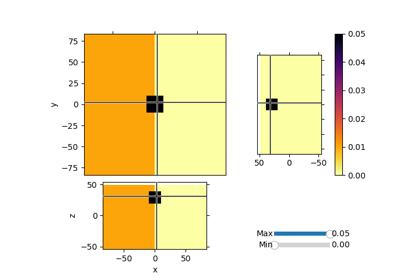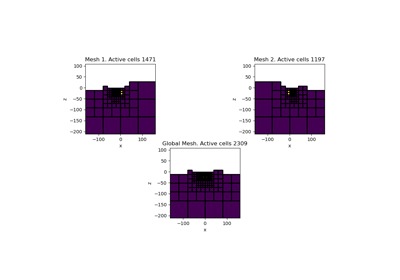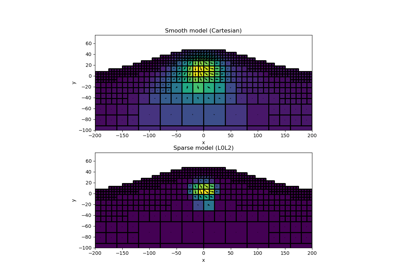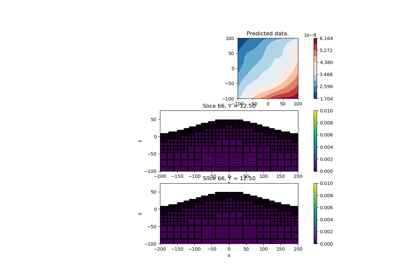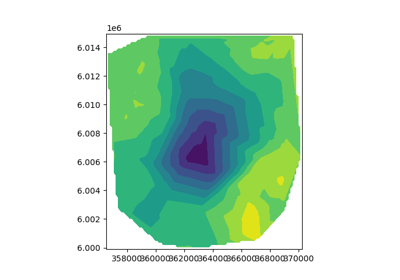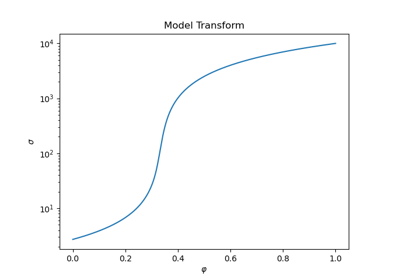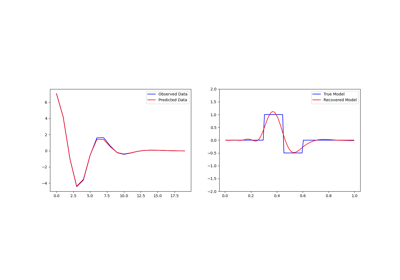simpeg.simulation.LinearSimulation#
- class simpeg.simulation.LinearSimulation(linear_model=None, model_map=None, G=None, **kwargs)[source]#
Bases:
BaseSimulationLinear forward simulation class.
The
LinearSimulationclass is used to define forward simulations of the form:\[\mathbf{d} = \mathbf{G \, f}(\mathbf{m})\]where \(\mathbf{m}\) are the model parameters, \(\mathbf{f}\) is a mapping operator (optional) from the model space to a user-defined parameter space, \(\mathbf{d}\) is the predicted data vector, and \(\mathbf{G}\) is an
(n_data, n_param)linear operator.The
LinearSimulationclass is generally used as a base class that is inherited by other simulation classes within SimPEG. However, it can be used directly as a simulation class if theGproperty is used to set the linear forward operator directly.By default, we assume the mapping operator \(\mathbf{f}\) is the identity map, and that the forward simulation reduces to:
\[\mathbf{d} = \mathbf{G \, m}\]- Parameters:
- model_map
simpeg.maps.BaseMap Mapping from the model parameters to vector that the linear operator acts on.
- G(
n_data,n_param)numpy.ndarrayorscipy.sparse.csr_matrx The linear operator. For a
model_mapthat maps within the same vector space (e.g. the identity map), the dimensionn_paramequals the number of model parameters. If not, the dimensionn_paramof the linear operator will depend on the mapping.
- model_map
Attributes
The linear operator.
A list of solver objects to clean when the model is updated
SimPEG
Counterobject to store iterations and run-times.HasModel.deleteTheseOnModelUpdate has been deprecated.
The model for a linear problem physical property model.
The inversion model.
Derivative of The model for a linear problem wrt the model.
Mapping of the inversion model to The model for a linear problem.
True if a model is necessary
Path to directory where sensitivity file is stored.
The survey for the simulation.
Verbose progress printout.
Methods
Jtvec(m, v[, f])Compute the Jacobian transpose times a vector for the model provided.
Jtvec_approx(m, v[, f])Approximation of the Jacobian transpose times a vector for the model provided.
Jvec(m, v[, f])Compute the Jacobian times a vector for the model provided.
Jvec_approx(m, v[, f])Approximation of the Jacobian times a vector for the model provided.
dpred([m, f])Predicted data for the model provided.
fields(m)Return the computed geophysical fields for the model provided.
getJ(m[, f])Returns the full Jacobian.
make_synthetic_data(m[, relative_error, ...])Make synthetic data for the model and Gaussian noise provided.
residual(m, dobs[, f])The data residual.
Galleries and Tutorials using simpeg.simulation.LinearSimulation#
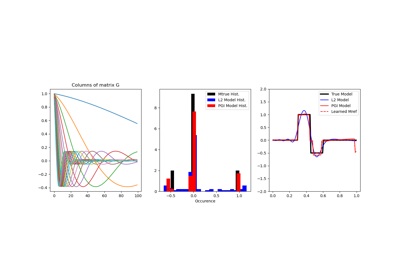
Petrophysically guided inversion (PGI): Linear example
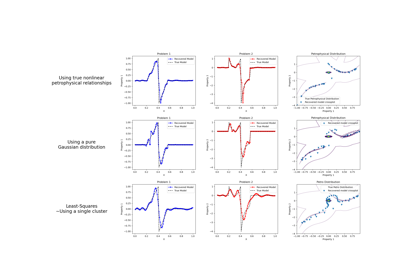
Petrophysically guided inversion: Joint linear example with nonlinear relationships
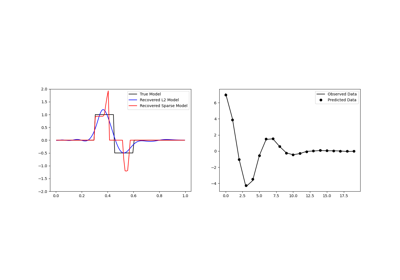
Sparse Inversion with Iteratively Re-Weighted Least-Squares
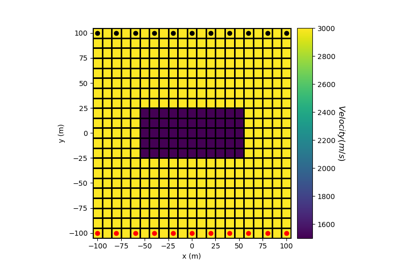
Forward Simulation for Straight Ray Tomography in 2D
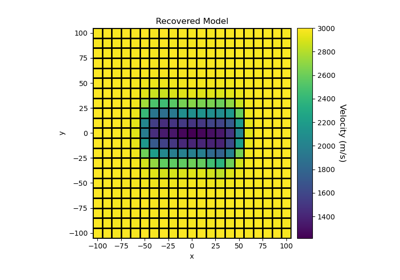
Sparse Norm Inversion of 2D Seismic Tomography Data
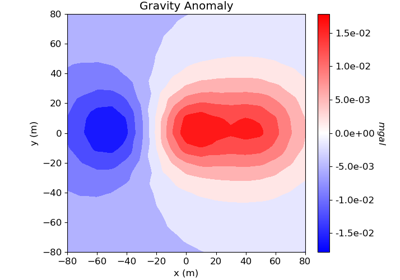
Cross-gradient Joint Inversion of Gravity and Magnetic Anomaly Data
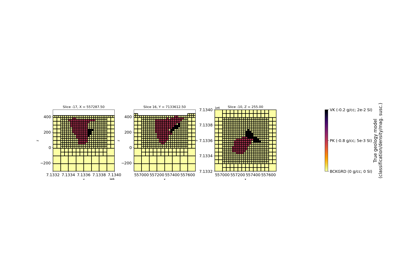
Joint PGI of Gravity + Magnetic on an Octree mesh using full petrophysical information
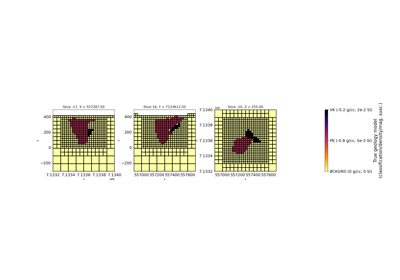
Joint PGI of Gravity + Magnetic on an Octree mesh without petrophysical information

